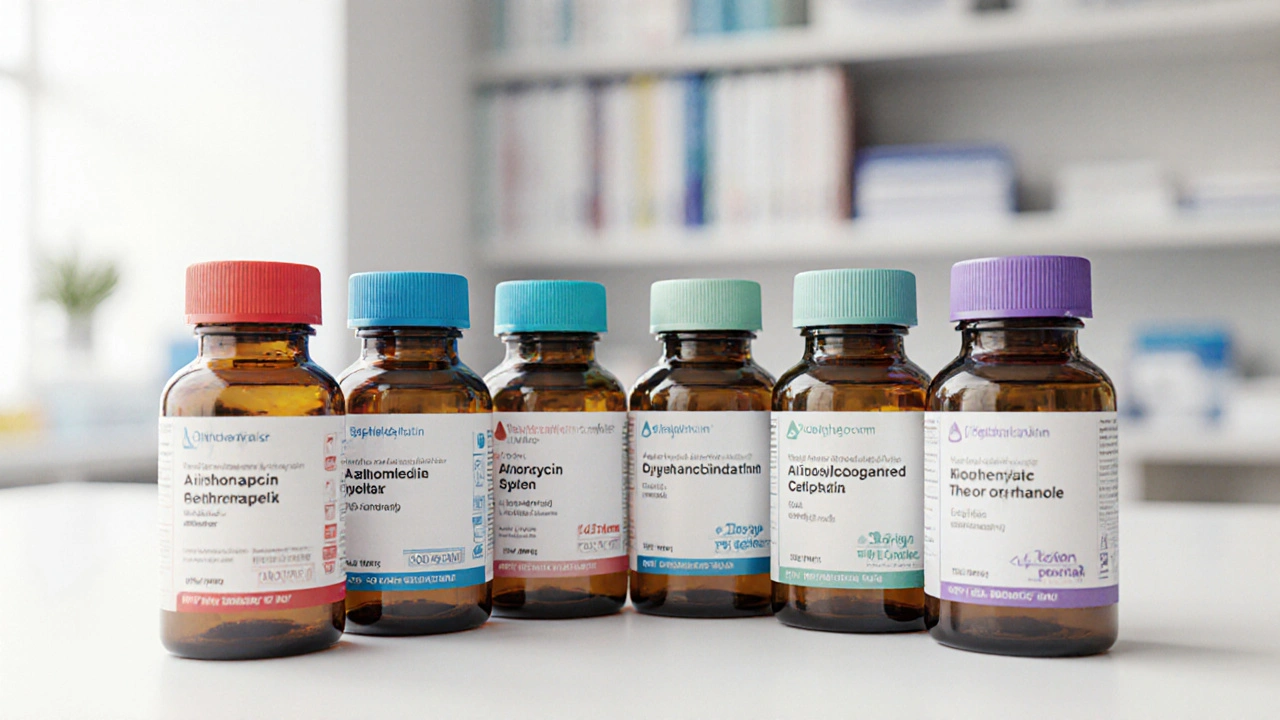Antibiotic Comparison
When you hear the phrase antibiotic comparison, think of lining up two or more drugs to see which one wins for a specific infection. Antibiotic Comparison the systematic evaluation of antibiotics based on effectiveness, safety, cost, and resistance profile. Also known as antibiotic side‑by‑side review, it guides doctors, pharmacists, and patients toward smarter choices.
Key players in any antibiotic comparison
First up, Antibiotics drugs that kill or stop bacteria from growing. They come in classes like penicillins, macrolides, fluoroquinolones, each with its own spectrum and quirks. Next, Bacterial Resistance the ability of bacteria to survive despite antibiotic exposure, a factor that can flip the outcome of a comparison overnight. Finally, Generic Antibiotics lower‑priced equivalents to brand‑name drugs with the same active ingredient. Understanding how these three entities interact is the backbone of a solid comparison.
Antibiotic comparison requires three pieces of data: the infection’s likely pathogen, the drug’s minimum inhibitory concentration (MIC) against that pathogen, and the patient’s health context. For example, a low‑cost generic amoxicillin may beat an expensive brand for a simple ear infection, but the same generic could fall short against a resistant strain of Streptococcus pneumoniae. That’s why the resistance profile is a non‑negotiable attribute in any side‑by‑side look.
Dosage guidelines form another crucial attribute. Dosage Guidelines recommended amounts and schedules that achieve therapeutic levels while minimizing side effects differ between drugs even within the same class. A 500 mg dose of ciprofloxacin taken twice a day reaches a different tissue concentration than a 250 mg dose of levofloxacin, affecting both efficacy and risk of gut upset. When you compare, line up the dosage information side by side so you can see which regimen fits the patient’s routine best.
Side‑effect profiles often tip the balance. Some antibiotics, like doxycycline, can cause photosensitivity, while others, such as clindamycin, carry a higher risk of C. difficile infection. By laying out the side‑effect list next to the effectiveness data, you give the prescriber a clear view of trade‑offs. This is especially important for vulnerable groups—kids, pregnant women, and the elderly—who may react differently to the same drug.
Cost is the final piece of the puzzle. Generic antibiotics usually win on price, but the cheapest option isn’t always the smartest. If a drug’s resistance rate is high in your area, paying a bit more for a different class could prevent a treatment failure and a costly hospital stay. Therefore, an antibiotic comparison that balances price against resistance data and patient safety delivers the most value.
Below you’ll find a collection of articles that dive deep into specific drug pairs, resistance trends, dosing tips, and buying guides. Whether you’re a healthcare professional scouting the best option for a patient or a curious reader wanting to understand why one pill is chosen over another, the posts ahead give you practical insights backed by real‑world data.

